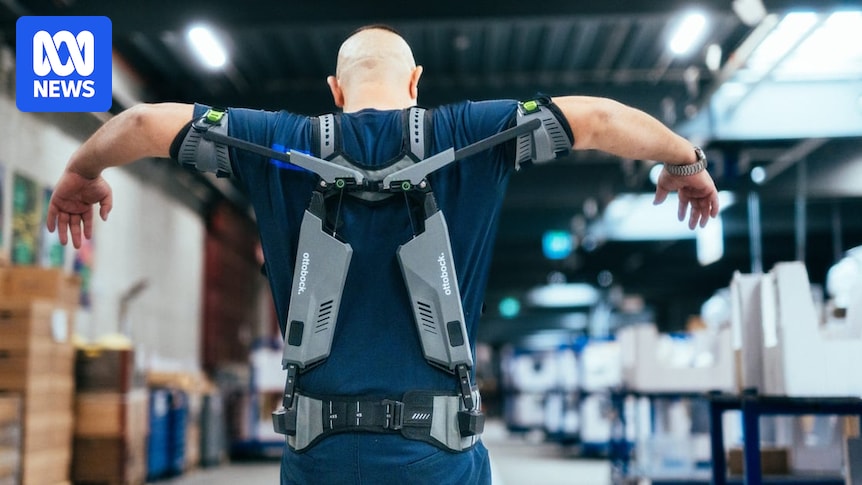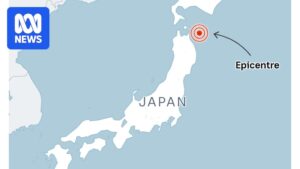
Millions of Australians risk their physical well-being daily to keep the nation’s essential industries operational, and the toll on their bodies is becoming increasingly evident. According to a new report from Safe Work Australia, joint, ligament, and muscle injuries are leading the surge in serious workers’ compensation claims, which have risen to 53,000 in 2022-23 from 49,300 the previous year. Musculoskeletal claims are also on the rise.
In the chilled environments of Australia’s meat-processing plants, ergonomist Chris Fitzgerald is exploring how technology could reverse this trend. He observes workers as they don the Iron Hand, a high-tech glove connected via cables to a powered backpack. This exoskeleton device uses fingertip sensors to enhance grip strength, assisting with tasks that require significant grip, such as consistent knife use for skinning, trimming, and boning.
“[In] sheep processing, they’ll process one every 6 seconds or so. With beef, it’s probably closer to once a minute,” Fitzgerald noted. “It’s repetitive. There’s not a lot of relief from that.”
Exploring Technological Solutions
The initiative is part of an Australian Meat Processor Corporation (AMPC) project aimed at reducing injuries in one of the country’s most physically demanding sectors. Starting with 20 devices designed to support the hands, back, and legs, Fitzgerald has narrowed the selection to six promising models.
“I’ve had people with lacerated tendons say, ‘My hand feels normal [after wearing it],'” Fitzgerald shared. The AMPC is collaborating with abattoirs to share data and guide future decisions. However, with some exoskeleton gloves costing over $15,000 each, companies must weigh the benefits, from enhancing worker comfort to productivity gains through reduced strain and injury.
Global Adoption and Expert Insights
Meanwhile, retail giant Ikea has already embraced exoskeleton technology, deploying over 400 units across 14 countries last year to mitigate warehouse injuries and fatigue. The company reports that the technology helps reduce the physical toll of heavy lifting and repetitive motions, enabling workers to complete shifts with “more energy.”
Gold Coast physiotherapist Brad Beer acknowledges both the potential and challenges of robotic assistance. “It’s very early days,” he remarked. “They offer potentially great promise in allowing workers to be more efficient, potentially less injury-prone, [and] potentially have a greater lifespan at work, but there can be downsides potentially as well.”
“It’s important to note that force is absolute. It doesn’t disappear. The body just shifts it to other areas,” Beer cautioned.
Despite the need for careful integration to avoid new types of strain injuries, Beer remains optimistic. “In many ways, it’s an exciting time to be alive. We’ve never seen such rapid technological change. There’ll be a move with AI-driven exoskeletons that absolutely are autonomous with the human body.”
The Future of AI-Enhanced Workers
This future may already be forming, at least in Europe. In May, German Bionic unveiled Exia, described as “the world’s first exoskeleton powered end-to-end by true augmented AI.” Built on billions of motion data points from logistics, healthcare, and manufacturing, the device reportedly offers up to 38 kilograms of lift assistance while continuously learning from its user.
“Exia doesn’t merely respond or even just think — it actually learns,” CEO Armin G. Schmidt stated.
Back in Australia, Beer suggests there is no need to fear a robotic takeover. “There’s a fair degree of apprehension and fear that these things will take over,” he said. “They won’t take people’s jobs, but they’ll augment them and help them.”
Having witnessed the physical demands of manual labor firsthand, Beer is hopeful about the integration of exoskeletons in industries like meat processing. “My father had his working career in the meat industry,” he reflected. “Certainly, meat processing is probably one of the more demanding professions anyone could have. Having seen that firsthand, the exoskeleton integration has potentially great promise in an industry like that.”
As technology continues to evolve, the potential for reducing workplace injuries through innovative solutions like exoskeletons remains a promising frontier for industries worldwide. The challenge will be balancing cost, integration, and the human element to ensure these advancements benefit workers without introducing new risks.






